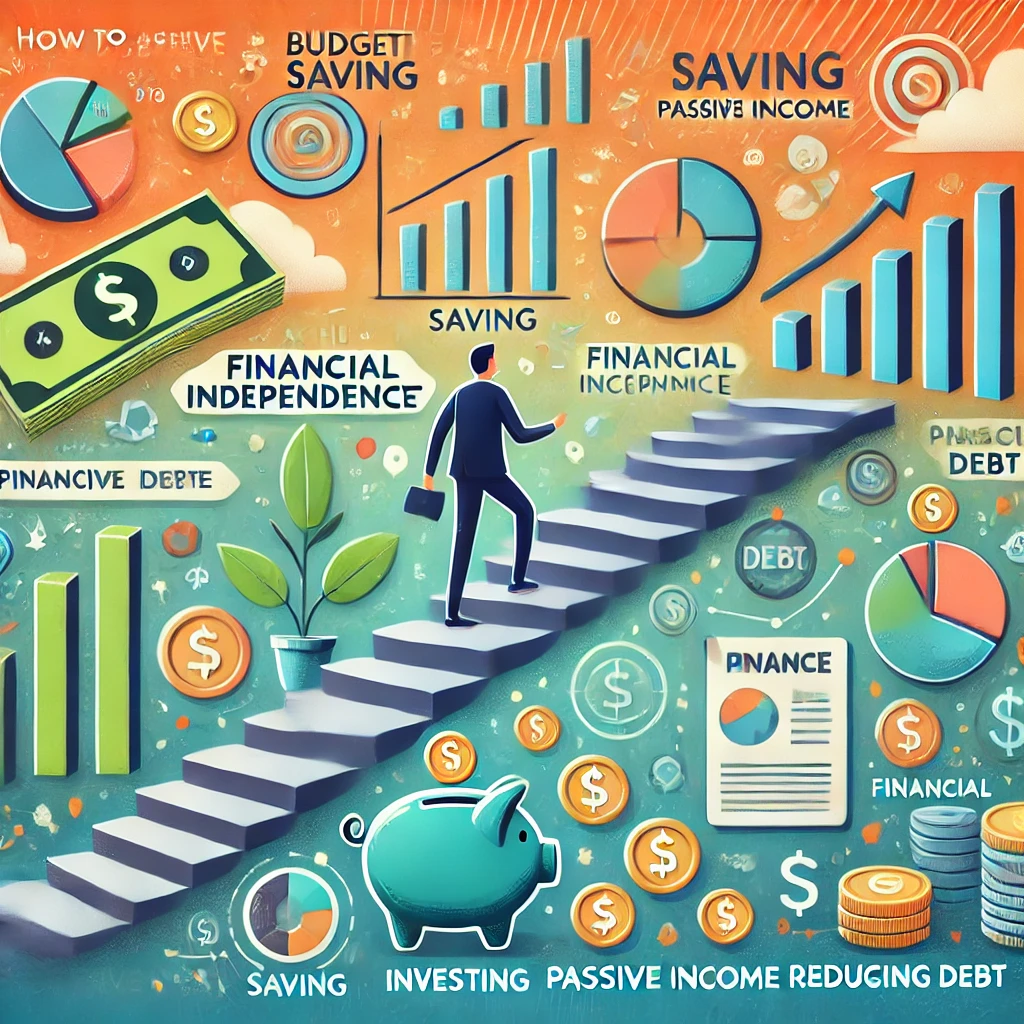Are you dreaming of financial independence, where you can work on your terms and live without money worries? It might sound like a distant fantasy, but with a solid plan and a bit of dedication, you can turn that dream into reality. Let’s dive into a step-by-step guide on how to achieve financial independence and make your money work for you.
Understanding Financial Independence
Before we get into the nitty-gritty, let’s clarify what financial independence really means. It’s not just about having a large bank account; it’s about having enough resources to cover your living expenses without relying on a traditional job. Imagine waking up and doing what you love without worrying about a paycheck. Sounds amazing, right?
Step 1: Set Clear Financial Goals
Every journey begins with a destination. For financial independence, start by setting clear, specific goals.
- Define Your Financial Freedom: How much money do you need to be financially independent? Calculate your desired lifestyle, including housing, transportation, and leisure activities.
- Create a Timeline: Set a realistic timeline to achieve these goals. Are you looking to retire early, or are you aiming for a gradual shift?
Step 2: Build a Solid Budget
A well-planned budget is the cornerstone of financial independence.
- Track Your Expenses: Start by tracking every penny you spend. There are many apps available to make this easier.
- Create a Budget Plan: Allocate funds for essentials, savings, and discretionary spending. Make sure your spending aligns with your financial goals.
Step 3: Eliminate Debt
Debt is like a heavy anchor that holds you back. To move forward, you need to cut those chains.
- List All Debts: Write down all your debts, including credit cards, student loans, and mortgages.
- Prioritize Payments: Focus on paying off high-interest debts first. Consider using the snowball method, where you pay off smaller debts first to build momentum.
Step 4: Build an Emergency Fund
An emergency fund acts as a financial safety net. It’s crucial to protect yourself from unexpected expenses.
- Determine the Amount: Aim for 3-6 months’ worth of living expenses.
- Choose the Right Account: Keep your emergency fund in a high-yield savings account for easy access and growth.
Step 5: Invest Wisely
Investing is a powerful tool to grow your wealth. But where should you start?
- Understand Different Investment Options: Stocks, bonds, mutual funds, and real estate are popular choices. Research and understand the risks and rewards of each.
- Diversify Your Investments: Don’t put all your eggs in one basket. Diversification helps minimize risk.
Step 6: Plan for Retirement

Even if retirement seems far off, it’s never too early to start planning.
- Contribute to Retirement Accounts: Maximize contributions to retirement accounts like 401(k)s and IRAs.
- Understand Tax Implications: Different retirement accounts have different tax benefits. Choose the one that aligns with your financial situation.
Step 7: Increase Your Income
Sometimes, boosting your income can accelerate your journey to financial independence.
- Explore Side Hustles: Consider freelancing, consulting, or part-time work.
- Invest in Yourself: Enhance your skills through education or training to increase your earning potential.
Step 8: Live Below Your Means
One of the simplest yet most effective strategies is to live below your means.
- Avoid Lifestyle Inflation: As your income increases, resist the temptation to upgrade your lifestyle unnecessarily.
- Embrace Frugality: Small savings can add up over time. Look for ways to cut costs without sacrificing your quality of life.
Step 9: Monitor and Adjust Your Plan
Your financial plan isn’t set in stone. Regularly review and adjust it as needed.
- Track Your Progress: Use financial tools or apps to monitor your progress towards your goals.
- Make Adjustments: Life changes, and so should your financial plan. Be flexible and adapt to new circumstances.
Step 10: Seek Professional Advice
Sometimes, it’s beneficial to seek advice from financial experts.
- Consult a Financial Planner: A professional can provide personalized advice and help you refine your strategy.
- Educate Yourself Continuously: Stay informed about financial trends and strategies to make better decisions.
Conclusion
Achieving financial independence is a journey that requires careful planning, disciplined saving, and strategic investing. By following these steps, you can build a solid foundation for a financially free future. Remember, it’s not just about accumulating wealth; it’s about creating a lifestyle that allows you to live on your terms. Start today, stay committed, and watch your financial dreams become a reality.
FAQs
1. How long does it take to achieve financial independence?
The timeline varies based on individual circumstances, including income, expenses, and savings rate. With disciplined planning and execution, many people achieve financial independence within 10-20 years.
2. What is the best way to start investing?
Begin with understanding your risk tolerance and investment goals. Consider starting with diversified index funds or ETFs, which offer a balanced risk-reward profile.
3. How can I reduce my expenses effectively?
Start by tracking your spending, identifying non-essential expenses, and creating a budget. Small changes, like cooking at home or canceling unused subscriptions, can make a big difference.
4. Should I prioritize paying off debt or investing?
Focus on paying off high-interest debt first. Once you’re debt-free, redirect those funds towards investing to grow your wealth.
5. How can I ensure my financial plan stays on track?
Regularly review and adjust your financial plan based on your goals and life changes. Use financial tools and consult professionals if needed to stay on track.
